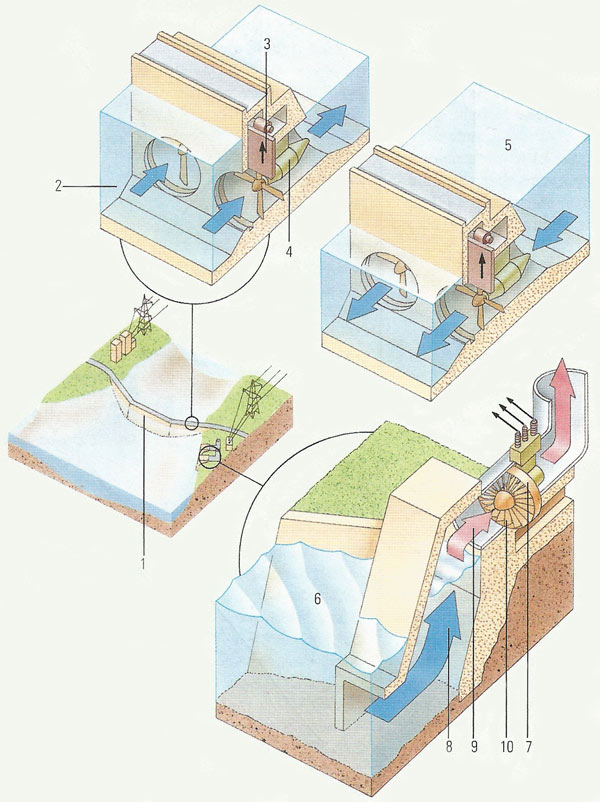tidal power

Tidal power is energy harnessed and used by man from tidal movement of the Earth's oceans. This form of power is economic only where the tidal range is greater than about 4.6 meters (15 feet). Modern schemes involve the use of turbo-generators driven by the passage of water through a tidal barrage. The La Rance power plant in northern France has been working successfully since 1966, and in 1969 a small tidal power plant was completed by the Soviet Union on the White Sea. Special turbines have been developed that can be driven by water flowing in either of two directions. However, all such schemes can have very serious effects on the ecology of the estuary that they enclose.
Key to diagram (right)
Tidal power uses a barrage (1) across an estuary or bay. The barrage contains turbines tat can spin with a flow of water in either direction. As the tide comes in, gates on the barrage remain closed until a head of water has built up on the sea side of the structure (2). The gates are then opened (3), and the incoming tide flows through the barrage driving the turbines (4). As the tide falls, the process is reversed with the gates closed until the sea has fallen below the level of water retained in the estuary (5). The second method of utilizing the power of the sea harnesses wave power (6). The key difference is that the turbine (7) is air driven, not turned by water. As a wave hits the shore, the force of the water (8) drives air (9) through the turbine blades (10), When the water level drops, air is sucked back down through the turbine spinning it again.
